Snakes of the Yucatan
Most of us who spend much time in the Yucatan owe a lot to one or two native Yucatecos who counseled us on everything from government bureaucracy to where to find the best deal on doorknobs. And if you're here long enough, someday this happens:
This invaluable friend appears at your door bearing a brightly colored, boldly patterned, horribly mangled little body of a snake, declaring that quick action and a sharp machete have just saved you from a deadly venomous encounter.
In fact if you live here long enough listening to your neighbors' stories about deadly snakes, you'll start getting the impression that every nook and cranny, indeed the whole countryside, is infested with horribly poisonous snakes.
Now let me tell you this: for years I've been tramping around in the Yucatan's woods, along forest trails, through plantations, in old buildings, hacienda gardens, roadsides, etc., and so far I've not for certain seen a single poisonous snake.
I know that they're here, for scientific literature tells me so, and I have a friend near Telchac Pueblo who one day in his orange orchard was bitten by a venomous Cantil and almost lost his leg. Still, my experience has been that poisonous snakes in the Yucatan are much rarer than, say, in Mississippi's piney hills, on Oregon's mountainous slopes, or Kentucky's rural countryside.
Which Venomous Snakes Are Here?
According to distribution descriptions in Jonathan A. Campbell's "Amphibians and Reptiles of Northern Guatemala, the Yucatán, and Belize," here are the dangerously venomous snakes to be found in the Yucatan Peninsula:
- Variable Coral Snake, Micrurus diastema; throughout (pictured in banner)
- Neotropical Rattlesnake, Crotalus durissus; throughout but spotty (first picture at right)
- Cantil, Agkistrdon bilineatus; northern Yucatan (second picture at right)
- Barba Amarilla, Bothrops asper; throughout except the northwest (third picture at right)
- Jumping Pitviper, Atropoides nummifer; southern Yucatan
This means that if your Yucatan base is near Mérida or along the northwestern coast, you only have three venomous species to worry about. You are too far west for the Barba Amarilla (also known as the Fer-du-lance), and too far north for the Jumping Pitviper. For you there's the coral snake, the rattlesnake and the Cantil. The Cantil is closely related to the Northern Water Moccasin or Cottonmouth.
Habits of Snakes
Both coral snakes and Cantils hunt mainly at night, and rattlesnakes are of a very spotty occurrence. Therefore, if you take normal precautions, such as watching where you put your hands and feet when you're in snake country, snakes are just not a big worry in places most of us go to. That is not to say that you needn't be careful in gardens, where there's thick underbrush, in trashy areas or where piles of leaves or other plant material are lying on the ground.
Getting to Know Your Snakes
If you are interested, you might want to consier doing a Google Image search on the venomous species from the list above that are found in your area, study their pictures, and become acquainted with each species' distinctive features.
The five species in the above list fall into two main groups: the coral snakes and the pit vipers. The bottom four species on the list are all pit vipers.
Variable Coral Snakes are known by these features:
- red, yellow and black rings encircle their bodies in the sequence of black-yellow-red-yellow-black
- a black forehead
- the head is about the same width as the neck
How To Recognize the Region's Venomous Snake
Every pit viper has a conspicuous pit, or hole, in its face between each eye and the nostril in front of it. The pits contain heat-sensing organs enabling the snake to locate warm-blooded prey in total darkness. (And you thought they were called pit vipers because they lived in pits, didn't you?)
The vipers and rattlesnake are responsible for most snakebites. At one time, bite fatality was about nine percent, but, due to the development of antivenom, that number has dropped to almost zero. It is important to seek medical treatment right away as the necrotic venom causes tissue necrosis which you can google later for nightmare fuel.
In the Yucatan, any native snake that is not banded like the mostly red-and-black coral snake (banner image), and does not have a pit between its eye and the nostril, is not dangerously venomous.
Mildly Venomous Snakes
Several other snake species are mildly venomous. If they bite you, you may suffer some inflammation and soreness for a few days but that'll pass and leave no lasting effects. Brown Vine Snakes, which more than one campesino has grabbed thinking they were dangling brown vines, are that kind of snake.
Friendly and Harmless Lookalike Snakes
An aggravating feature of dealing with venomous snakes in the Yucatan is that several perfectly harmless, gentle species do a good job mimicking a venomous species. That's especially the case with coral snakes. The Ringed and Short-faced Snail-eater (fifth picture), Long-tailed False Coral, Red Coffee Snake (fourth picture at right), and the Tropical Milksnake all look somewhat or very much like venomous coral snakes. Some of them are quite common, and are likely to be seen during the day. The vast majority of snakes I've seen mangled because they were identified as coral snakes have been harmless, wonderful little Tropical Milksnakes, who like to curl up in flowerpots on patios, and little Red Coffee Snakes, who have a passion for trashy areas, and who, if you nudge them, are likely to fall over in a faint, not bite.
Snakes, In General, Are Nice
Snakes play an important part in maintaining the balance of species in the ecosystem, especially with regard to controlling rodent populations. Even more important, snakes are beautiful and worthy creatures in their own right. Not every snake you find should be killed, therefore, and it would do the Yucatan environment a world of good if we all learned how to tell the venomous apart from the harmless.
Editor's Note: We have to concur with Jim Conrad, the Backyard Nature guy... we have lived here for many years and the only snakes we have seen have been dead on the highway.
If you enjoyed this article, we encourage you to read more about the nature around you in Jim's wonderful website, www.backyardnature.net. and look for more articles about the Yucatan natural world here soon!




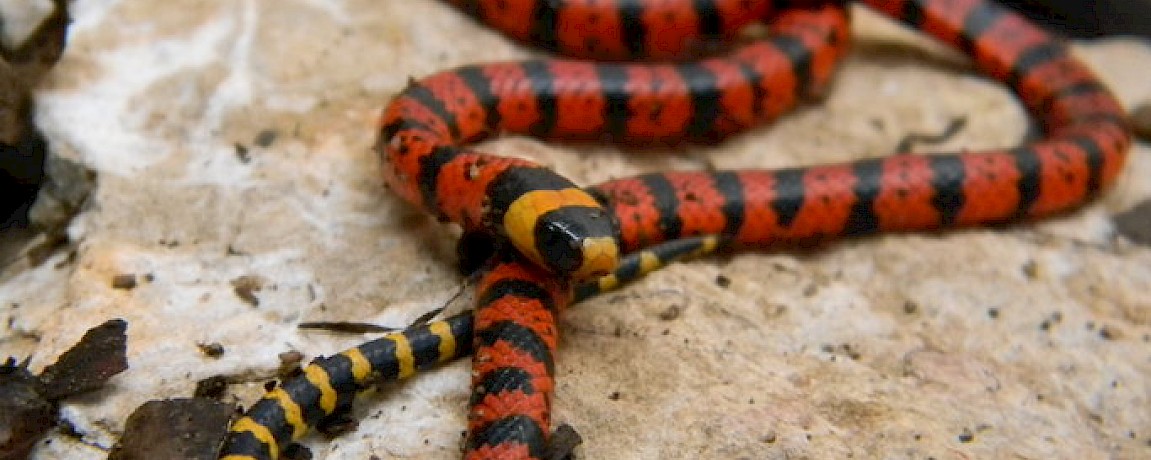

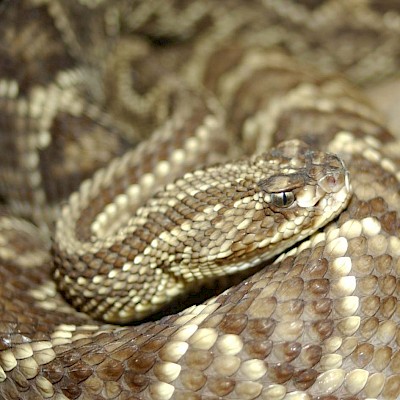
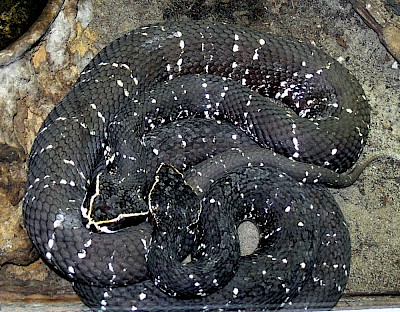
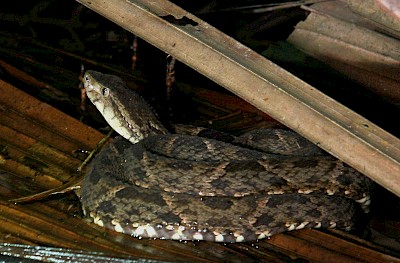
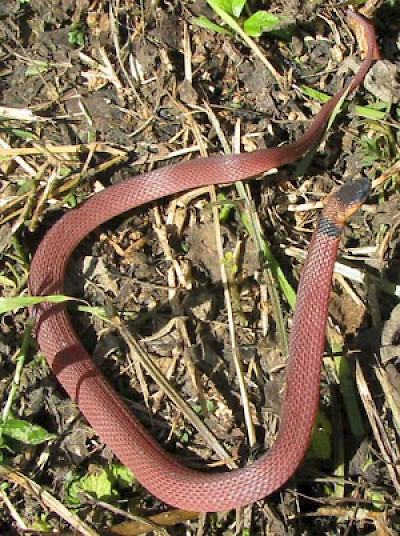
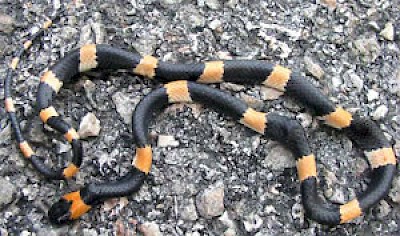
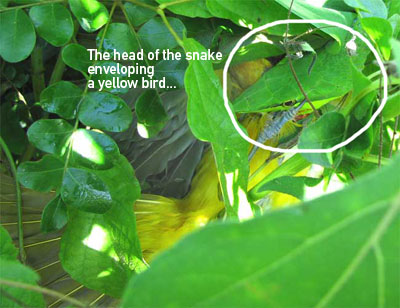
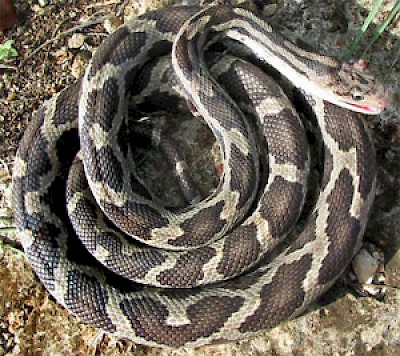
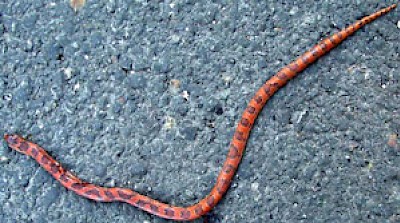
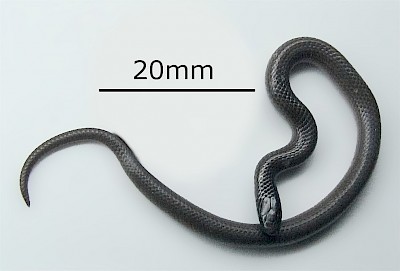

Comments
Working Gringos 12 years ago
Ladies, Working Gringa here... have lived in Merida for ten years. In that WHOLE time, I saw one tiny little harmless snake in my house and two on the road (while driving). Never saw one walking... which is NOT a claim I can make for California. Merida is not the jungle... you will be perfectly safe, with or without your husband. Seriously.
Reply
Jennifer 12 years ago
Tammy... I am feeling your pain... I was going to rent a house in Merida for a month without my husband but with my 3 kids... Seriously thinking of scrapping the whole idea after reading this article and comments...
Reply
Working Gringos 12 years ago
Tammy, there are bugs in the Yucatan, and there are snakes. In ten years, we maybe actually saw five snakes. Seriously, its not worth cancelling a vacation over... we wrote the article to give people who are interested the information. Some people actually LIKE snakes :-).
Reply
tammy 12 years ago
Ok wow. I knew to stay out of the 'jungle' areas but after reading this I'm thinking of cancelling the vacation rental we have in Progreso for 2 months. I am traveling alone with many children and am terrified of snakes, spiders and scorpions!! The little geckos are ok though :) Am I really going to have to look around all the time and through cupboards etc?? how about on the beach? First 'snake' that ever jumped at me, I'd be on the next flight once I 'came to". OMG. Please help! Seriously concerned now...
Reply
Norman D 13 years ago
Jhom,
What area do you live? I travel to photograph rattlesnakes and would like to photograph some live ones
Reply
GW 13 years ago
I am a gringo living near Mani. I purchased a ranch and am currently clearing jungle with an axe and machete and I can assure you there are venomous snakes. Rattle snakes prefer to live near the trees they make palapas with. We killed a 1 meter rattle long snake yesterday. We also killed 2 huolpoch (the mayan name ) black snakes that jump at you, I am assuming the jumping pit viper. The huolpoch are always in pairs so if you kill one in an area be very wary because there will be one more around somewhere. We also saw a coral snake one evening when we were doing a vampire bat catch with one of the family friends but we didnt kill that one because the vet we were with decided he wanted to have it as a pet and caught it with his bare hand. I would have to agree with the author of this article though: when walking on jungle trails, you will rarely see a snake. Just be wary where you put your appendages and always carry a machete! I hope some of the information I have imparted will be of use to anyone who is dealing with snakes in this part of the world.
Reply
Working Gringos 13 years ago
We're with you. We did a little internet research and this page (http://www.wildflower.org/expert/show.php?id=1825) says that there are no known plants that attract snakes.
Reply
cwtuckness 13 years ago
I'm a gringo living in Yucatan. I help this young couple, with home and a garden. The young wife claims this plant , that i bought and, forgot the name, its similar to a Wandering Jew, green and purple. She thinks this plant attracts snakes, and wants to kill all snakes. My question is do any plants attract snakes? I thought snakes eat rodents and not plants? thank you for your time.
Reply
Working Gringos 14 years ago
Thank you, Jhom, for that thorough comment. As city-dwellers, you are right... we don't see snakes much. In nine years in the Yucatan, we have seen only a few and only one or two small and harmless ones actually in our garden or in our house. But having a healthy understanding and respect for what lives in the countryside is a good thing for all of us. We appreciate your sharing of your experiences.
Reply
Jhom 14 years ago
It was very interesting for me to encounter Jim's article on a gringo expat web site, not the typical fare offered to strangers in a strange land. Having lived here myself on a ranchito for 12 years, it is to be lauded that he brings up a subject that would be censored by Diario de Yucatan for deviating from blind boosterism.
However, I think Jim comes from the new wave school that snakes are natural and everything natural must be good if we just understand it and respect it. Syphilis is also natural, understood, and respected He has never seen a venomous snake and of course he wouldn't in the expat mecca of downtown Merida. I have killed around 15 cascabels (the local name for the rattlesnake) very close to the house. One had 23 rattles, the last one several weeks ago had gotten inside the house, after it had struck and killed one of my pet geese. Six geese killed by cascabels, 5 pet ducks by coralillos, 3 ducks by boas. I have killed coralillos, uol posh, cuatro narises (literally 'four noses'), and large boas. I also have convinced my guys to leave green vine snakes, green parrot snakes, brown racers, centipede eaters, snail eaters, scorpion eaters, and small boas alone.
The common guard of the crossroads is a difficult decision, for being rear-fanged with mild venom it is not lethally dangerous, but who needs a loco aggressive snake flinging himself at you and trying to bite you?
A reply about red on black or yellow is OK for milk snakes, but Russian roulette for the variable coral snake, and the same can be said for the advice to look for tiny thermal detection pits to make a judgement. When I first came here a cascabel drive was initiated after 5 cattle had been killed in a month in a pasture. A lot of cascabels were killed. Then in the past few weeks when my old gray goose was trying to tell me how bad it hurt, I knew it was a snake by the loss of the use her legs, and I knew she had been hit very close to the front porch. I searched but couldn't find it. That night I was writing about issues far removed from the ranchito, and sometime after midnight got up for another beer and in the darkened room saw a snake writhing on the tile floor. My mind was in Cambridge , MA and was oblivious to the fact that I had been searching for a cascabel, was annoyed that a small boa had gotten in, and before I knew what happened, I had grabbed it, realized what it was and killed it. The same week two people in the pueblo were struck by small uol posh and had to be hospitalized with anti venom. A friend's dog was struck by the same kind of snake in Cholul and it is still touch-and-go, even though she is a super dog.
The moral for me is not to be fearful and crazed about snakes, but do not dismiss them at your peril. The Jonathan Campbell paperback is a popular paperback guide, but it is not his two-volume treatise on the subject. It is totally unjustified to claim fer de lance snakes don't exist near Merida, because the reports have placed them a few kilometers to the east. They exist here only 15 kilometers away and there is no invisible barrier.
Reply
Craig 14 years ago
Found a snake by our pool about ten minutes ago. Yellow body with black reticulation. About two metres long, not very thick.
We live in the Playa del Carmen area.
Thoughts?
Reply
« Back (20 to 31 comments)Next »